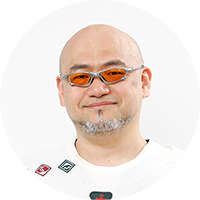All seven parts of the “Kamiya Chronicles”, a long form interview with Hideki Kamiya that looks back over his 27-year career in the games industry, are now available on the YouTube channel Cutscenes!
See Kamiya reflect on a variety of topics from his first encounter with video games to his work on PlatinumGames’ latest title SOL CRESTA, and his thoughts on everything he’s done and experienced as a game creator along the way. We highly recommend watching the whole series at once!
01: First Steps
Unravel the beginning of Kamiya’s career, starting with joining Capcom, secrets of Resident Evil’s development, and meeting Shinji Mikami.
02: Speak of the Devil
Kamiya speaks on how Resident Evil 4 became Devil May Cry, and how the events that transpired affected his career afterward.
03: No Average Joe
Kamiya divulges the true meaning hidden in Viewtiful Joe’s ending, and the mission he was given by Shinji Mikami.
04: The Brush Up of Okami
Kamiya tells the secrets of how the masterpiece Okami came to be, his desire to do a sequel, and the things he never got to do…
05: The Conjuring of Bayonetta
Kamiya talks about why Bayonetta came to be a beloved series, the difficulties of making sequels, and a development style that promotes world building.
06: The Wonderful 101, then Scalebound
Kamiya reveals the story behind Scalebound’s cancellation, and the unlikely birth of The Wonderful 101.
07: Neo Classic
Kamiya talks about how SOL CRESTA came into being as the first title in the NEO-CLASSIC ARCADE series.
 |
Hideki Kamiya Senior Vice President/Chief Game Designer Hideki Kamiya was born in Matsumoto, Nagano prefecture, in 1970. Kamiya joined Capcom in 1994, making his directorial debut with Resident Evil 2 in 1998. While at Capcom, he directed the original titles Devil May Cry and Viewtiful Joe. In 2006 he created Okami, a nostalgic tribute to Japanese folklore that was awarded the Grand Prize for Entertainment at the Japan Media Arts Festival that same year. Since coming to PlatinumGames, he’s directed Bayonetta (2009) and The Wonderful 101 (2013). In 2016, he became an executive officer at our company, and soon moved up to become a member of the board. As Chief Game Designer, he has a hand in boosting the quality of all of our titles, in addition to continuing his work as a game designer. |